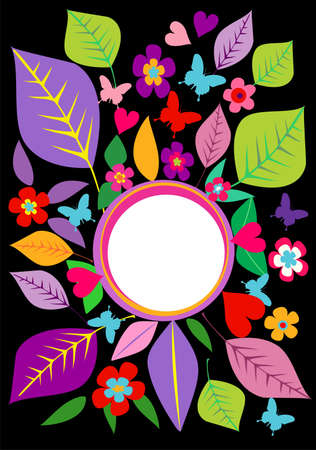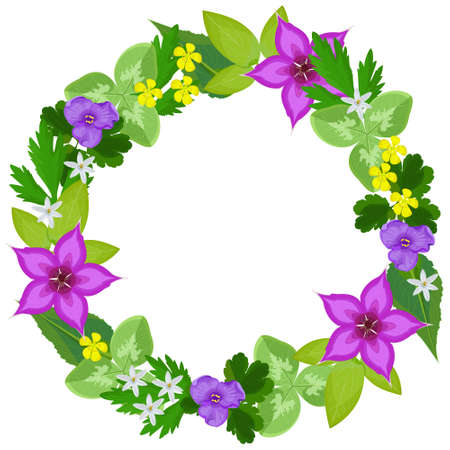1. Why Go Eco-Friendly with Garden Markers?
As American gardeners become more eco-conscious, the shift toward sustainable gardening practices is undeniable. Choosing eco-friendly garden markers and labels is a simple but impactful way to reduce your environmental footprint while keeping your garden organized. Traditional plastic or metal markers can take decades to break down and may leach harmful substances into the soil. In contrast, using biodegradable or upcycled materials aligns with modern values of conservation and responsibility.
Benefits of Sustainable Materials for Garden Markers
| Sustainable Material | Environmental Impact | Durability | Cultural Appeal |
|---|---|---|---|
| Bamboo | Biodegradable, renewable resource | Moderate | Popular in eco-friendly U.S. gardens |
| Reclaimed Wood | Reduces landfill waste, repurposes scrap | Varies by treatment | Aligns with upcycling trends |
| Stones/Rocks | No manufacturing footprint, reusable | High | Nostalgic, natural aesthetic in American landscapes |
| Recycled Metal | Lowers demand for new resources | High with proper care | Urban/rustic vibe popular in U.S. garden design |
| Cork/Wine Corks | Repurposes household waste, compostable | Low to moderate (seasonal use) | Clever DIY appeal, reflects American creativity |
How Eco-Friendly Choices Fit American Gardening Trends
The rise of sustainable living and DIY culture in the United States has influenced how people approach their gardens. Using locally sourced, recycled, or biodegradable materials for garden markers not only minimizes harm to the environment but also supports a sense of community and ingenuity. This trend connects gardeners to a larger movement that values both personal expression and global stewardship, making every plant label a statement of environmental commitment.
Gathering Materials: Sustainable Supplies You Can Find at Home
Before you start crafting your own eco-friendly garden markers and labels, it’s time to gather materials that are both sustainable and easy to source. Many everyday items found in a typical American household or at local stores can be repurposed into creative, earth-conscious garden markers. Below is a handy table of common recycled and biodegradable materials, along with tips on where to find them and how they can be used:
| Material | Where to Find | How to Use |
|---|---|---|
| Wooden Popsicle Sticks | Leftover from frozen treats or craft stores | Write plant names directly on the stick; push into soil |
| Wine Corks | Saved from wine bottles or ask friends/family | Skewer cork onto a wooden stick; write label on cork surface |
| Smooth Rocks/Stones | Collect from your yard, parks, or landscaping stores | Paint or write plant names using permanent marker or paint pen |
| Tin Can Lids | Upcycle lids from canned goods in your pantry | Punch a hole, tie with string, and hang from stakes or branches |
| Bamboo Skewers or Chopsticks | Reuse from takeout meals or buy bamboo skewers inexpensively | Tape or glue paper labels on; also great for supporting small plants |
| Old Plastic Spoons/Forks | Salvaged from single-use cutlery sets | Write directly on the handle; insert into soil as sturdy markers |
| Popsicle Boxes/Cardboard Packaging | Recycled food boxes or shipping packaging at home | Cut into strips; write plant names; best for temporary use in dry conditions |
| Popsicle Sticks Painted with Non-toxic Paints | Popsicle sticks and safe paints from craft supplies at home or store | Add color coding for herbs, veggies, flowers for easy identification |
| Twine/String & Scrap Wood Pieces | Sourced from old projects or hardware stores’ scrap bins | Tie handwritten tags to stakes made from wood scraps for rustic charm |
| Mason Jar Lids (without bands) | Collected after reusing mason jars for storage or gifts | Punch a hole and hang as weather-resistant labels on sturdy plants or stakes |
By using these easily accessible materials, you’ll not only save money but also keep waste out of landfills. Plus, each marker adds a personal touch and unique character to your garden beds—making your green space both beautiful and sustainable.

3. Step-by-Step Instructions for DIY Eco Garden Markers
Making your own eco-friendly garden markers is a fun and rewarding way to personalize your garden while reducing waste. Below, youll find simple tutorials for several popular styles using sustainable materials and basic tools you likely already have at home.
Wooden Stick Markers
Materials Needed:
| Item | Description |
|---|---|
| Wooden sticks (e.g., popsicle sticks, twigs) | Sourced from craft stores or your backyard |
| Permanent marker or woodburning pen | For labeling plant names |
| Natural oil (optional) | For sealing and weatherproofing |
Instructions:
- Gather clean wooden sticks of your preferred length.
- If using twigs, peel off some bark for a smoother writing surface.
- Write the plant name clearly with a permanent marker or use a woodburning pen for extra durability.
- (Optional) Rub with natural oil like linseed to help protect against moisture.
- Insert the marker into the soil near your plant.
Upcycled Wine Cork Labels
Materials Needed:
| Item | Description |
|---|---|
| Wine corks (natural, not synthetic) | Collected from used wine bottles |
| Bamboo skewers or old chopsticks | As stakes for the corks |
| Permanent marker | To write plant names |
Instructions:
- Poke a hole in the flat end of each cork using a skewer or small screwdriver.
- Write the plant name on the side of the cork with a permanent marker.
- Insert the bamboo skewer into the hole in the cork to create a stake.
- Place the label stake firmly into your garden bed or potting soil.
Recycled Metal Can Tags
Materials Needed:
| Item | Description |
|---|---|
| Cans (aluminum beverage cans) | Empty and rinsed out thoroughly |
| Scissors (heavy-duty) | For cutting metal safely |
| Punch tool or nail & hammer | Create holes for hanging or stakes |
| Permanent marker or paint pen | Add labels to each tag |
| Twine, wire, or old coat hangers (optional) | For hanging markers if desired |
Instructions:
- Carefully cut both ends off your can and snip down one side to create a flat sheet of aluminum.
- Cut into rectangles or fun shapes like leaves or hearts.
- Punch a hole at one end for attaching string or wire if you want to hang them, or leave as-is for staking directly in soil.
- Write the plant name using a permanent marker or paint pen. For extra flair, let kids decorate them!
- If hanging, thread twine through the hole; otherwise, insert directly into soil near plants.
Troubleshooting Tips:
- If your labels fade, consider sealing them with natural beeswax or an eco-friendly varnish.
- Avoid plastic ties—opt for biodegradable twine or hemp cord instead when securing tags.
- If making markers with kids, supervise closely when using scissors or sharp tools.
This hands-on approach lets you customize markers to fit your garden’s style while keeping sustainability front and center. Experiment with materials you already have, involve family members, and enjoy creating an eco-friendly touch to your gardening routine!
4. Creative Labeling Ideas: Adding a Personal Touch
Giving your eco-friendly garden markers and labels a personalized twist not only makes your garden more beautiful, but also adds a sense of pride and creativity—especially for family gardens. In this section, we’ll explore decoration techniques using non-toxic paints, upcycled materials, and unique lettering styles to make your markers both functional and fun.
Non-Toxic Paints for Safe and Vibrant Designs
Choose water-based or plant-based paints that are free from harmful chemicals. These are safe for the environment and perfect for gardens where children play or help out. Use stencils to create patterns like leaves, flowers, or even cute bugs, or let kids use their fingers to make colorful dots and swirls.
Upcycled Materials: Turning Trash into Treasure
Get creative by repurposing items that might otherwise end up in the landfill. Here are some common household materials you can upcycle into garden markers:
| Material | Decoration Tips | Weatherproofing Suggestions |
|---|---|---|
| Wine Corks | Write plant names with permanent marker; decorate with paint or stickers. | Seal with natural beeswax to prevent water damage. |
| Popsicle Sticks | Paint with non-toxic colors; add doodles or stamps for flair. | Lacquer with an eco-friendly sealant for durability. |
| Mason Jar Lids | Attach chalkboard paint for changeable labels; add rope for hanging. | Use weather-resistant twine and ensure lids are rust-free. |
| Smooth Stones | Paint names directly on stones; outline with vibrant colors. | Apply a layer of natural varnish for longevity. |
Unique Lettering Styles for Extra Character
The way you write plant names can be just as expressive as the materials you use. Try these ideas:
- Hand-lettered Calligraphy: Adds elegance to herb gardens or flower beds.
- Kid’s Handwriting: Perfect for a playful vegetable patch—let each child label their own plants!
- Stencil Fonts: Use reusable stencils for uniformity and boldness, especially helpful if you want clear labels from a distance.
- Braille Dots: Consider adding tactile dots for accessibility if you have visually impaired family members or guests.
Family-Friendly Fun: Make It a Group Project!
Create memories by turning marker-making into a weekend DIY activity. Set up a table outdoors with all your supplies—paints, recycled items, markers, brushes—and invite everyone to join in. Not only will your garden look fantastic, but each marker will tell a story unique to your family’s creativity.
5. Tips for Durability: Weather-Proofing Your Markers
When it comes to garden markers and labels, especially in the diverse climates found across the United States, durability is key. From the humid summers of the South to the rainy Pacific Northwest and the sun-soaked Southwest, your eco-friendly markers need to stand up to a variety of weather conditions. Here are some strategies and green materials you can use to make sure your labels last all season—and maybe even longer—without harming the environment.
Choosing Weather-Resistant Materials
Selecting the right base material is your first line of defense against the elements. Below is a quick guide comparing eco-friendly options:
| Material | Pros | Cons |
|---|---|---|
| Bamboo | Biodegradable, naturally water-resistant, strong in wind | May fade over time without sealing |
| Recycled Plastic | Waterproof, long-lasting, diverts waste from landfills | Not biodegradable, but reusable year after year |
| Upcycled Metal (e.g., aluminum cans) | Weather-proof, won’t rot or mold, easily marked with pen or engraver | Takes more effort to prepare; sharp edges require sanding |
| Wood Scraps (untreated) | Sustainable if locally sourced, customizable shapes and sizes | Prone to weathering unless sealed properly |
Eco-Friendly Sealants and Finishes
If you’re using wood or bamboo markers, consider applying natural sealants to extend their life. Options include:
- Beeswax Polish: Rub on a thin layer for water resistance without toxic chemicals.
- Lemon Oil: Penetrates wood fibers and helps repel moisture.
- Naturally Derived Linseed Oil: Forms a protective barrier that’s safe for edible gardens.
Permanence in Labeling Methods
The writing itself matters! Use non-toxic permanent markers or grease pencils to prevent fading. For metal or plastic surfaces, paint pens made with plant-based inks offer longevity and environmental safety.
Placement Matters Too!
No matter how well you weather-proof your labels, placement can make all the difference. Insert markers at an angle so rainwater runs off rather than pools on top. Place them close to plants for wind protection and avoid direct contact with soil when possible to reduce rot.
By combining smart material choices with eco-friendly finishes and thoughtful placement, you’ll ensure your DIY garden markers stay readable and beautiful throughout America’s ever-changing seasons—all while keeping your garden green in every sense of the word.
6. Involving the Family: An Eco Project for All Ages
Turning garden marker-making into a family project is a wonderful way to blend creativity, learning, and sustainability. Inviting kids or other family members to join in not only helps you create unique and practical garden labels, but also fosters environmental awareness from an early age. By spending time together on this eco-friendly weekend activity, you’ll be teaching children the value of reusing materials and caring for the planet—right in your own backyard.
Why Make Garden Markers as a Family?
Collaborative DIY projects like this offer numerous benefits. Children get hands-on experience with eco-friendly practices and can express their artistic side. Adults can share gardening knowledge while enjoying quality bonding time. Plus, everyone gets to celebrate their creations each time they visit the garden!
Ideas to Get Everyone Involved
| Family Member | Task Ideas |
|---|---|
| Younger Kids (Ages 3-8) | Decorate pre-cut markers with non-toxic paint or markers, draw pictures of plants, help sort recycled materials |
| Older Kids (Ages 9-14) | Cut and sand reclaimed wood or sticks, write plant names using stencils, brainstorm creative designs |
| Teens & Adults | Assist with cutting harder materials (like metal), assemble finished markers, research eco-friendly sealants |
Tips for a Fun and Safe Marker-Making Session
- Set up a dedicated workspace outdoors or in the garage to minimize mess.
- Use child-safe tools and non-toxic supplies whenever possible.
- Encourage each person to personalize a set of markers—consider adding names or fun illustrations.
Making it Educational
This activity is an excellent opportunity to teach about plant identification, recycling concepts, and even basic biology. You might ask your kids to look up interesting facts about the plants they’re labeling or challenge them to find new uses for household “trash.” Making garden markers together isn’t just eco-friendly—it’s memory-making at its best.
7. Next Steps: Caring for Your Labels and Reusing Them
Once you’ve created your eco-friendly garden markers and labels, the key to a truly sustainable gardening routine is proper care and reuse. By maintaining your markers, you can keep them looking fresh and functional for years to come, reducing waste and saving money.
Best Practices for Maintenance
- Placement: Position markers in areas protected from direct sprinkler spray or harsh midday sun, which can fade writing or degrade some natural materials.
- Regular Checks: Inspect labels every few weeks for wear, legibility, or weather damage. Replace or touch up as needed.
- Waterproofing: If you’re using wooden or paper-based labels, consider an occasional coat of natural wax or homemade beeswax polish to repel moisture and extend their lifespan.
Cleaning Eco-Friendly Garden Markers
Keeping your labels clean not only improves readability but also prolongs their usability. Here’s a quick guide:
| Material | How to Clean |
|---|---|
| Bamboo/Wooden | Wipe with a damp cloth; use mild soap if needed. Let air dry completely before reuse. |
| Flat Stones/Rocks | Rinse under running water and scrub gently with a brush; let dry in the sun. |
| Cork/Wine Corks | Brush off dirt when dry; avoid soaking to prevent crumbling. |
| Popsicle Sticks/Upcycled Plastic | Wash with soapy water and rinse well; towel dry before relabeling. |
Reusing Garden Markers Year After Year
- Erasing Old Labels: Use rubbing alcohol or a paste of baking soda and water to remove permanent marker ink from stones or plastic surfaces.
- Rotating Uses: Assign new plant names each season by painting over wooden labels with chalkboard paint or using erasable markers on plastic tags.
- Tidy Storage: At the end of the growing season, gather all markers, clean them, and store in a dry box or bag away from sunlight until next year.
Sustainable Gardening Routine Tips
- Create a yearly habit of checking and refreshing your garden markers during spring planting and fall cleanup.
- Encourage kids or family members to help with cleaning and relabeling—making it a fun annual tradition!
- If any markers break down, compost biodegradable ones and recycle suitable parts from others whenever possible.
A Greener Gardening Experience Awaits
Caring for your eco-friendly garden markers ensures they stay beautiful, useful, and earth-friendly season after season. With these simple routines, you’ll support both your plants and the planet while enjoying a personalized touch in your garden beds!


